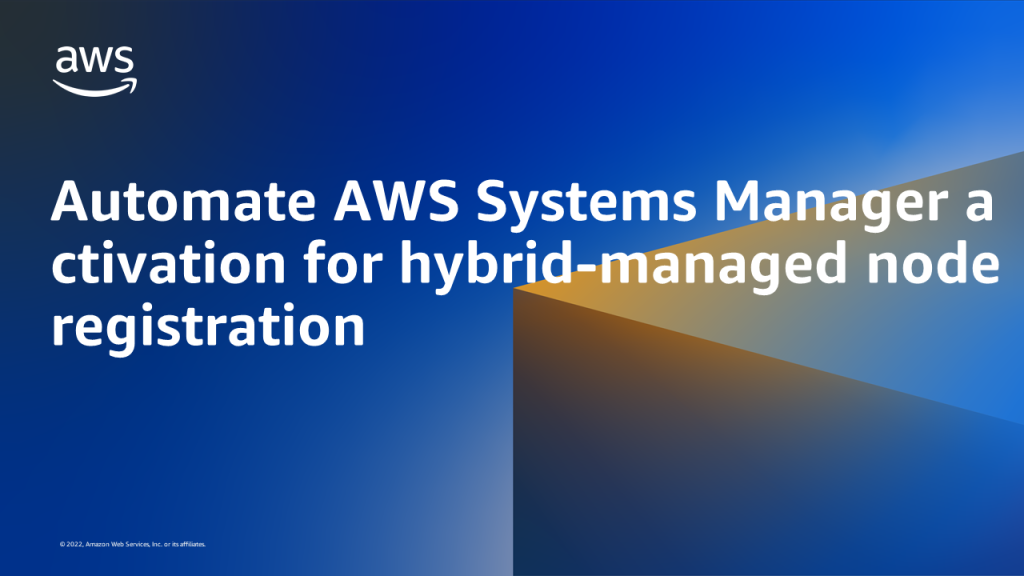AWS Cloud Operations Blog
Category: Database
MagellanRx Modernizes Claims Adjudication Application from AIX Oracle platform to Amazon Linux 2 and Amazon Oracle RDS
Customers desiring to modernize enterprise workloads from on-premises IBM AIX System p environments into AWS face portability concerns. AIX workloads do not lend themselves to a lift and shift type of migration pattern and require re-platforming or refactoring. This is due to operating systems and processor architectures in Power AIX systems and x86 Linux systems […]
Monitoring Amazon RDS and Amazon Aurora using Amazon Managed Grafana
Organizations running critical applications on AWS using fully managed database services such as Amazon Relational Database Service (Amazon RDS) and Amazon Aurora rely on robust monitoring to ensure that their databases are performant, and cause no service disruptions to their customers. Amazon Managed Grafana is a fully managed and secure data visualization service that you […]
Automate AWS Systems Manager activation for hybrid-managed node registration
AWS Systems Manager (formerly known as SSM) is an AWS service that you can use to view and control your servers on AWS cloud and on-premises infrastructure. Systems Manager makes it easy to manage a hybrid environment. To set up servers and virtual machines (VMs) in your hybrid environment as Systems Manager managed instances, you […]
Visualize AWS Service Catalog Product Usage in an AWS Organization with Amazon QuickSight
AWS Service Catalog is a widely used service that simplifies the management of tools, services, and resources in AWS accounts for organizations. This service empowers end users to provision products vetted by their organization in their environments with confidence in security and compliance. Portfolios are shared with AWS accounts in an AWS Organization, from which […]
Flight Controller by Contino – A Solution built on AWS Control Tower
Today AWS customers are rapidly adopting the cloud and at a massive scale. To support this demand, customers must build a strong foundation based on AWS well-architected best practices. A well-architected landing zone is a key construct that lets you vend accounts, provision access, setup security guardrails, and build CI/CD pipelines. However, at scale, implicit […]
AWS offerings available to support your cloud migration
With over a million active customers, AWS has experience helping organizations of all sizes migrate workloads to the cloud. A common theme is that selecting the right tools is crucial for reducing risk and enabling a reliable migration. In this blog post, I will select some of the most popular AWS migration tools and outline […]
Managing your application metadata using AWS Service Catalog App Registry
Customers need a way to track all of their AWS application resources in one place, and associate metadata like cost center, business unit with those resources centrally. AWS Service Catalog AppRegistry removes the need for complex tag management and allows for customers to aggregate application metadata such as cost center and business units across multiple […]
DevOps automation for backup compliance in AWS using AWS Backup Audit Manager
Backup compliance in AWS includes defining and enforcing backup policies to encrypt your backups, protect them from manual deletion, prevent changes to your backup lifecycle settings, and audit and report on backup activity from a centralized console. AWS Backup Audit Manager, a feature within the AWS Backup service, provides built-in compliance controls for these areas. […]
Use AWS Systems Manager Automation to automate Snowflake storage integrations with Amazon S3
AWS Systems Manager lets you safely automate common and repetitive IT operations and management tasks. Furthermore, Systems Manager Automation lets you use predefined playbooks, or you can build, run, and share wiki-style automated playbooks to enable AWS resource management across multiple accounts and AWS Regions. Snowflake, the Data Cloud, is an APN Partner that provides […]
Using ELB Access Logs and AWS Application Cost Profiler to track tenant cost of shared AWS Infrastructure
In our previous post on AWS Application Cost Profiler (ACP), we demonstrated how application owners instrument a serverless application with tenant metadata in a contextual format using AWS X-Ray. This tenant metadata is necessary for ACP to generate a granular cost breakdown of shared AWS resources used by multi-tenant applications. These granular cost insights let […]









